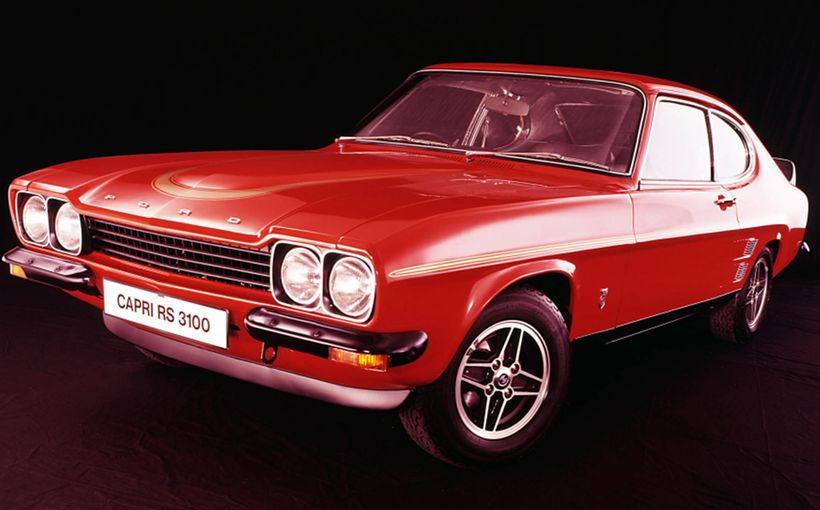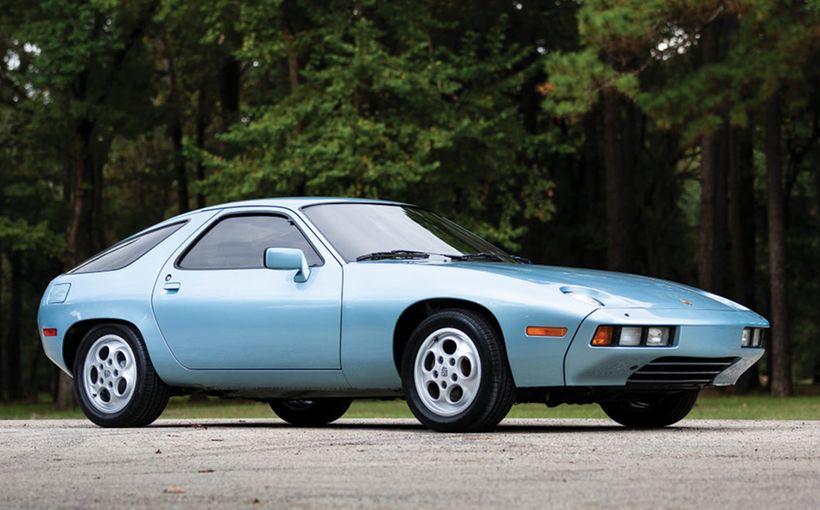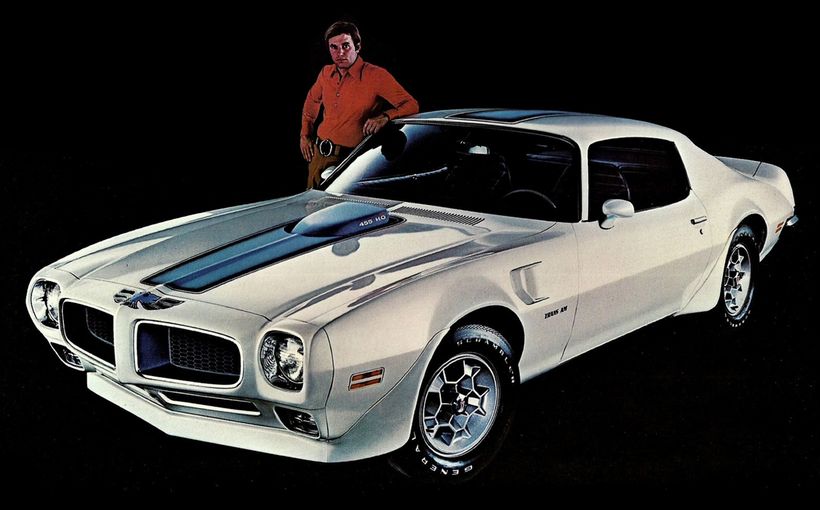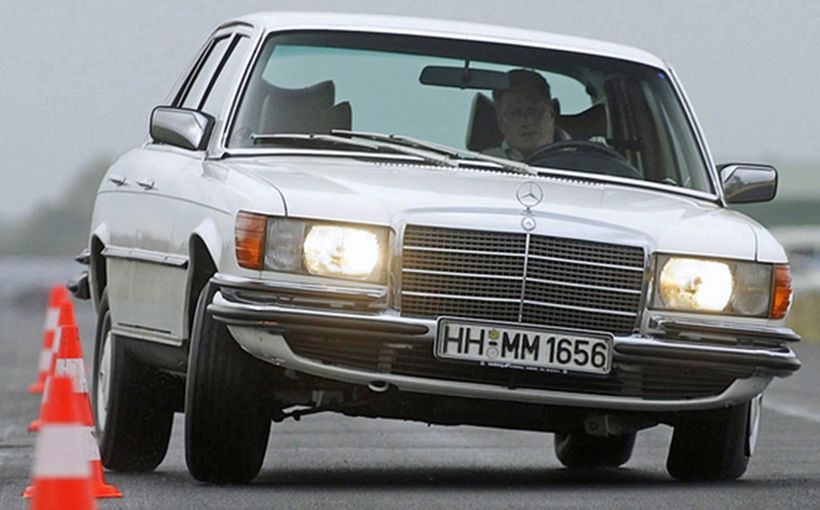Rover 3500 SD1: British V8 muscle on the Mountain

Tom Walkinshaw Racing delivered Jaguar’s first and only Bathurst 1000 victory in 1985 with its howling XJ-S V12 coupes. Perhaps less known is that TWR also ran booming V8-powered Rover SD1s there the previous year, which dominated the new Group A ‘preview’ class and showed that the muscular British sedan was poised to become a serious contender in Aussie tin-top racing.
However, the Rover V8 threat never emerged when Australia dumped its home-grown Group C rules in favour of the FIA’s international Group A class in 1985. There was no factory presence by Jaguar Rover Australia in the Australian Touring Car Championship that year, as the company’s energies were focused on TWR’s three-car Jaguar assault at Bathurst in October.
Only one privately-entered SD1 driven by WA’s Tim Slako appeared in the 1985 ATCC at selected rounds and only two competed at Bathurst that year with mixed results. The Rover V8 presence in local touring car racing was almost non-existent in 1986. The promise shown by the SD1s at Bathurst in 1984 went nowhere.

In stark contrast, the factory-backed Rovers campaigned by TWR in the European Touring Car Championship in 1985 and 1986 were highly competitive.
The fierce combat between Rover, BMW, Volvo and Ford works teams during this exciting period produced some of the best tin-top racing ever seen in the ETCC, with gripping contests also fought out in the courtrooms over vehicle legalities.
Unfortunately, despite their prodigious speed and durability, the works TWR Rovers were narrowly denied victory in both the 1985 and 1986 ETCCs, despite taking each title fight right down to the final bell.
Rover pulled out of touring car racing at the end of 1986, fed up with all the politics and disillusioned after two expensive European campaigns that promised so much but failed to deliver the ETCC crown it craved. And, in the eyes of many fans, it so richly deserved against the turbo hordes.
The dominance shown by the TWR Mobil cars at Bathurst was the high point for Rover in Australian touring car racing. How the potent V8-powered SD1 went from a standard road car to a winning race car suggests they could have been very successful here had TWR been given the job.

Rover 3500 SD1: From British champion to European contender
When the stunning SD1 range was launched in the UK in 1976, the premium 3500 V8 model appeared to have all the right ingredients needed to create a winning touring car, or ‘saloon’ car as the Brits called them.
With its low slung sporty profile and notable absence of a traditional radiator grille between the headlights, it had a very efficient shape for racing with a relatively low drag co-efficient.
Blessed with the light weight and proven reliability of Rover’s 3500cc (3.5 litre) all-aluminium V8, the SD1 featured a conventional gearbox and tail-shaft arrangement feeding power to a coil-sprung live rear axle well suited to competition duties.
With MacPherson struts up front and rack and pinion steering, the new Rover’s wide track relative to its wheelbase resulted in a responsive racing chassis with a slight tendency towards oversteer.
And its kerb weight of around 1400 kgs would make it competitive in the big capacity class once the usual weight loss procedures were applied.
Organisers of the UK’s premier tin-top series, the British Saloon Car Championship, were keen to entice this new V8 bruiser onto the race track to provide some much needed competition for Ford’s 3.0 litre V6 Capri, which in the category’s mildly modified Group 1 form had been dominating the big car class for years.
Unsurprisingly, in 1980 it was announced that the BSCC’s engine capacity limit would be raised from 3.0 litres to 3.5 litres. Although the SD1 V8’s 3528cc was just over the new limit, it was successfully argued that factory tolerances allowed it to just squeeze in at 3495cc.

Austin Rover Group’s motor sport boss, John Davenport, was enthusiastic about the SD1’s potential. In 1979 he commissioned David Price Racing to develop a prototype, and after private track testing proved promising, two cars were built in readiness for the 1980 BSCC.
Win Percy, driving a Mazda RX-7 prepared by TWR, dominated the driver’s championship that year thanks to a string of wins in the smaller capacity class, but the raw speed shown by the new SD1s in the 2501-3500cc division proved Rover was on the right track. With the lusty carburettor-fed V8s producing about 250 bhp, Jeff Allam scored the car’s first BSCC win that season.
Rover chose to step-up its touring car program by signing with TWR in 1981. This would expand to include a successful domestic rallying program, even though the big V8 sedan’s considerable size and weight were not considered ideal for the UK’s tight forest tracks and narrow bitumen events.
The TWR-prepared Rovers were impressive in the 1981 BSCC, with Jeff Allam and Pete Lovett winning six of the 11 rounds (including five outright wins) to steal class honours from the previously invincible Capris. Percy claimed the overall driver’s title again for Mazda, but the big V8 sedans were coming on strong.
Rover and TWR maintained their winning momentum in the 1982 BSCC, trouncing the Capris again in the last year under Group 1 rules. For 1983 the British series switched to the new international Group A regulations. These allowed for greater technical freedoms in some areas, while maintaining key bodywork and mechanical links with the road cars on which they were based.

As TWR needed to homologate new components to maintain the SD1’s winning edge on the race track, agreement was reached with Rover to develop a high performance model that could fulfil both requirements. In effect a race homologation special.
The new ‘Vitesse’ - a French word meaning ‘speed’ - was launched in the UK late in 1982.
It featured a number of go-fast goodies for racing purposes, the most prominent being a very large rear spoiler positioned at the base of the SD1’s long sloping rear window.
It not only looked the goods but wind tunnel development ensured it generated enough downforce to help tame the big Rover’s tendency to become tail-happy at high speeds.
The Vitesse’s other major performance upgrade was fuel injection. At the time, Walkinshaw was also running Jaguar’s XJ-S attack on the European Touring Car Championship and was acutely aware of the power gains that were only possible with this more precise form of fuel delivery.
As expected the TWR Vitesses, with improved aero and 290 bhp on tap, decimated the 1983 BSCC winning all 11 rounds outright. However, Rover’s glory was to be short-lived after a BMW team protested the legality of the TWR cars, citing over-sized rear wheel housings and valve-train components (rockers) that had not been homologated.
The protests resulted in a lengthy and bitter enquiry that stretched well into the 1984 season and ended up in the High Court. The judges finally ruled in favour of BMW and Rover was stripped of its 1983 title.
In disgust, British Leyland immediately withdrew its Rover team from the 1984 BSCC mid-season and announced that its works cars would only compete in the European Touring Car Championship. Even so, all was not lost for Rover in the British series, with Andy Rouse claiming the 1984 crown in his privately-entered Vitesse and Tim Harvey winning the title again in 1987.
TWR Rover’s multi-car attack on the ETCC made sense, given that it had succeeded in its three-year fight with BMW to win the title with Jaguar’s XJ-S coupes in 1984. Jaguar had nothing left to prove in touring cars, so with Walkinshaw set its sights on sports car racing instead and a Le Mans 24 Hour win.

1985 European Touring Car Championship
The 1985 ETCC produced a gripping season-long conflict between TWR’s thunderous Rover Vitesses and the controversial and astonishingly fast works Volvo 240 Turbos, prepared for the first time by Swiss tuning ace Ruddi Eggenberger.
The ETCC required an entirely different approach to the short sprint races of the British series, with each race lasting several hours (24 hours at Spa) and requiring a minimum of two drivers per car.

TWR Rover entered up to three Vitesses at some rounds, turned out in a stunning orange and white colour scheme backed by Belgian tobacco brand Bastos and oil giant Texaco. The well prepared British cars, with their fuel injected 3.5 litre aluminium V8s now producing more than 300 bhp, got off to a flying start against the Volvos with three straight wins.
However, as Eggenberger started to tap into the huge power available from the turbocharged Swedish rockets, the works Volvos came on strong in the second half of the season with Gianfranco Brancatelli/Thomas Lindstrom eventually toppling Rover’s Tom Walkinshaw/Win Percy to claim the championship.
It had been a tremendous battle between two unlikely foes, but the ferocious speed shown by the Volvos looked ominous for 1986 as they continued to turn up the wick. It was clear the Rovers would need more grunt.

1986 European Touring Car Championship
The venerable SD1 Rover was nearing its end after a decade in production. And with Volvo proving that turbocharging was the way of the future, 1986 was the last chance for the tough V8 Vitesse to claim the ETCC crown.
After coming so close in 1985, Rover and TWR stepped up their efforts to produce a championship winner by homologating a new big breathing twin-throttle body plenum chamber developed by Lotus for the fuel injection system.
This was designed to take full advantage of new camshaft freedoms announced for 1986 which removed valve-lift restrictions. The changes resulted in a useful performance boost, with the TWR Vitesse engines claimed to produce more than 340 bhp at around 6800 rpm with a safe 7500 rpm limit.
At high revs these engines sounded incredibly muscular, with a thunderous roar that made them an audible delight for drivers and spectators alike.
Big strides in electronic engine management also resulted in better fuel economy, which was a critical factor in ETCC races. Restricted to a 120-litre fuel tank, it was crucial to stretch every last drop of fuel to get maximum laps between stops.

The lusty British V8 sedans, with top speeds on fast circuits like Monza and Hockenheim approaching 170 mph (270 km/h) in 1986, were going to need every performance gain they could find.
Reigning champion Volvo was returning and there was a new turbocharged challenger in Ford’s potent Sierra XR4 Ti now run by Eggenberger, who had defected from the Swedish marque after one season to head up Ford’s factory effort.
BMW, like Rover, had also exploited the easing of valve lift restrictions to squeeze more power from its naturally aspirated 3.5 litre six cylinder 635 CSi coupe.
And they would be joined at several rounds by Holden’s booming 4.9 litre V8-powered Group A VK Commodores, with Peter Brock and Allan Grice keen to measure the performance of their Aussie muscle cars against Europe’s best in preparation for the inaugural World Touring Car Championship in 1987.
The 1986 works Vitesses were the ultimate expression of the SD1 breed, easily identified by the much larger front spoiler also homologated as part of the twin plenum engine upgrade. TWR had honed them into very fast and durable machines, featuring tank-tough body shells rigidly braced from front to rear with welded roll cages hand-crafted from tubular steel.

A big factor in their speed and endurance was TWR’s close technical alliance with Dunlop and the 17 x 11-inch tyres specially developed for the Rovers, using a new kevlar construction that controlled heat transfer and a very rigid sidewall for better handling response and control.
These cars, built right down to the minimum weight limit of just over 1100 kgs, bristled with engineering features designed for peak efficiency in the heat of battle.
In pit stops they could change drivers, four wheels and refuel in only 20 seconds. The suspension was tuned with special dampers so that the car’s handling remained consistent, regardless if the big 120-litre fuel tank was full or near empty.
For long distance races like Spa, the big ventilated front disc brakes featured a water cooling system that sprayed a fine mist onto the rotors each time the brake pedal was applied to keep a lid in temperatures and extend brake life.
The Getrag five-speed racing gearboxes were designed so that they could be quickly replaced if damaged during a race. The same applied to the special live rear axle housings, which it was claimed could be swapped with a replacement unit in only six minutes.

The 1986 ETCC was another tremendously tough and close contest, with the TWR Rovers scoring several big wins and the Schnitzer works BMW team becoming front runners again. After a hard fought and resolutely consistent campaign, TWR Rover’s Win Percy was declared the 1986 ETCC champion after finishing just one point ahead of Roberto Ravaglia’s Schnitzer BMW.
Sadly, the celebrations for Percy, TWR and Rover lasted only four weeks. That was when governing body FISA reminded everyone that it had issued a low key bulletin at the beginning of the season which stated that a driver had to drop his five worst results from his final point-score, as opposed to the four of the previous year.
As a result of this gut-wrenching oversight, Ravaglia and BMW were declared the 1986 ETCC champions! It was the end of a memorable – if frustrating - era for the mighty TWR Rovers in European touring car racing.

TWR Vitesses: The Australian Connection
The 1984 Bathurst 1000 was the last to host Australia’s unique Group C touring cars which had visited Mount Panorama each year since 1973.
With Australia switching to Group A rules the following year, the Bathurst 1000 race organisers introduced a ‘preview’ class for the new Group A cars to run alongside the Group C machines, to let local teams and spectators get a glimpse of their future.
Group A’s Bathurst debut created great interest, with the 15-car entry headed by a pair of Vitesses entered by TWR. Backed by Mobil, one was shared by Jeff Allam and German ace Armin Hahne, with the other crewed by British top gun Steve Soper and Aussie Ron Dickson.
The two Rovers were expected to be the class of the field, with their main rival being the locally-prepared JPS BMW 635 CSi built along similar lines to the top European works cars. Team boss Frank Gardner paired 1967 World F1 champ and Can-Am legend Denny Hulme with speedy Bavarian prince Leopold von Bayern.

Other Group A cars of interest included a 5.0 litre V8 Ford Mustang for Barry Seton/Don Smith, Toyota Supra for Peter Williamson/Charlie O’Brien, Alfa Romeo GTV6 for Colin Bond/Alfredo Costanzo and a new Mitsubishi Starion in works Ralliart colours for Kevin Bartlett/Peter Fitzgerald.
Practice times proved that the battle-hardened factory Rovers were in a class of their own, qualifying less than 0.3 secs apart but more than five seconds faster than anyone else. It looked like the only way the British cars would be beaten in the race was if they took each other out.
The two Mobil machines bolted into the distance as expected. They ran close together in the early laps until Dickson suffered a differential failure through Forrest’s Elbow on lap 27 that caused him to nose into the tyre wall.
The car was taken back to the pits on the recovery truck where the well-drilled TWR crew changed the complete rear axle assembly. Soper was behind the wheel when it returned to the track many laps down, with the rest of the event proving a useful test session.

Allam meanwhile was going like a train in the class lead, steadily climbing up the lap charts. By the time the Englishman made his first scheduled stop on lap 42 to hand over to Hahne, he was in 23rd place after starting 36th in a capacity field of 64 cars.
The leading Rover was consistently lapping two to three seconds faster than the JPS BMW. By half distance the Vitesse was running 15th outright and had climbed to 12th place when the chequered flag fell, ahead of many faster and highly fancied Group C cars.
It was a display of arrogant mastery by TWR, having beaten a proven Group A yardstick like the BMW 635 CSi by four laps. Little wonder many fans thought the Rover Vitesse would be the car to beat in Australian Group A racing the following year.
However, there wasn’t a wholesale rush of Aussies heading to the UK to buy Rovers - and with good reason. Fact is, if you were going to race a V8 touring car in this country, the most affordable, practical and convenient choice continued to be the carby-fed 5.0 litre Holden Commodore.

The other Aussie Vitesses
The best known example was driven by WA-based Tim Slako, who bought the Vitesse prepared and driven with great success by Andy Rouse in the 1984 BSCC.
Even though Slako praised the quality preparation by Rouse, describing it as a fast, agile and reliable car, it could not duplicate its UK success during Slako’s ownership in 1985-86.

The West Aussie only competed in selected rounds of the ATCC and suffered two frustrating Bathurst 1000 appearances paired with the experienced Geoff Leeds.
In 1985 the car suffered numerous wheel failures traced to faulty bolts securing the rim halves to the wheel centres and finished 13th. Leeds crashed the Vitesse in practice for the 1986 race, requiring an all-night rebuild that was completed just in time to make the race start. However, the hastily repaired car was sidelined after 77 laps when the engine’s harmonic balancer failed.

The other Rovers seen at Bathurst in the Group A era were a privately entered Vitesse for Barry Robinson and John Jeffries in 1985, which started rear of grid and lasted only 59 laps before retiring with engine failure.
A second Vitesse also took part in the 1986 Bathurst 1000 shared by John Donnelly and Simon Harrex. This car qualified towards the rear of the huge 59-car grid and lasted 98 laps before it too succumbed to mechanical problems.
It was the last time Rover's V8 Vitesse would compete in The Great Race. After arriving with such a roar in 1984, it departed with a whimper only two years later. Its performances in Europe, though, prove that its potential in Australia was largely unfulfilled.
Protect your Rover. Call Shannons Insurance on 13 46 46 to get a quote today.









